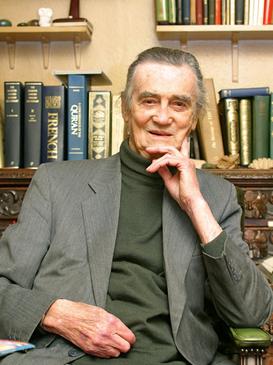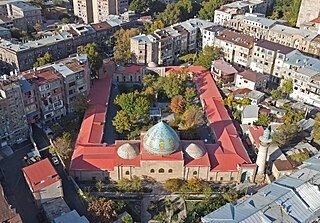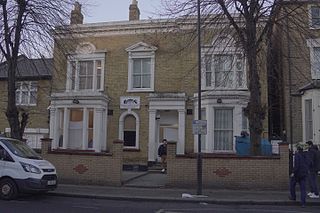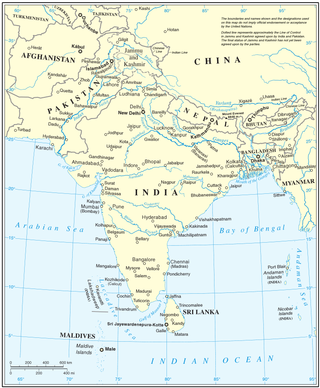Related Research Articles
A mosque, also called a masjid, is a place of worship for Muslims. The term usually refers to a covered building, but can be any place where Islamic prayers are performed, such as an outdoor courtyard.

Islam has been practiced in China since the 7th century CE. There are an estimated 17–25 million Muslims in China, less than 2 percent of the total population. Though Hui Muslims are the most numerous group, the greatest concentration of Muslims reside in northwestern China's Xinjiang autonomous region, which contains a significant Uyghur population. Lesser yet significant populations reside in the regions of Ningxia, Gansu and Qinghai. Of China's 55 officially recognized minority peoples, ten of these groups are predominantly Sunni Muslim.

The documented history of Islam in the Republic of Ireland dates back to the 1950s. The number of Muslims in the Republic of Ireland has increased since the 1990s, mostly through immigration. For the 2022 Irish census, 81,930 were counted.

Sunni Islam is, by far, the most widely practiced religion in Tajikistan. Sunni Islam of the Hanafi school is the recognized religious tradition of Tajikistan since 2009. According to a 2009 U.S. State Department release, the population of Tajikistan is 98% Muslim,, with some Sufi orders.

The London Central Mosque is an Islamic place of worship located on the edge of Regent's Park in central London.

Islamic culture or Muslim culture refers to the historic cultural practices that developed among the various peoples living in the Muslim world. These practices, while not always religious in nature, are generally influenced by aspects of Islam, particularly due to the religion serving as an effective conduit for the inter-mingling of people from different ethnic/national backgrounds in a way that enabled their cultures to come together on the basis of a common Muslim identity. The earliest forms of Muslim culture, from the Rashidun Caliphate to the Umayyad Caliphate and the early Abbasid Caliphate, was predominantly based on the existing cultural practices of the Arabs, the Byzantines, and the Persians. However, as the Islamic empires expanded rapidly, Muslim culture was further influenced and assimilated much from the Iranic, Caucasian, Turkic, Indian, Malay, Somali, Berber, and Indonesian cultures.
Cultural Muslims, also known as nominal Muslims, non-practicing Muslims or non-observing Muslims, are people who identify as Muslims but are not religious and do not practice the faith. They may be a non-observing, secular or irreligious individuals who still identify with Islam due to family backgrounds, personal experiences, ethnic and national heritage, or the social and cultural environment in which they grew up. However, this concept is not always met with acceptance in conservative Islamic communities.

Islam is the second largest religion in Norway after Christianity. As of 2020, the number of Muslims living in Norway was 182,607. The majority of Muslims in Norway are Sunni, with a significant Shia minority. 55 percent of Muslims in the country live in Oslo and Viken. The vast majority of Muslims have an immigrant background, and very few Norwegians are Muslim.

The experiences of Muslim women vary widely between and within different societies. At the same time, their adherence to Islam is a shared factor that affects their lives to a varying degree and gives them a common identity that may serve to bridge the wide cultural, social, and economic differences between them.

Charles le Gai Eaton was a British diplomat, writer, historian, and an Islamic scholar. He is perhaps best known for his 1994 book, Islam and the Destiny of Man.

The Muslims in Slovenia are ethnically mostly Bosniaks and ethnic Muslims. In 2014, there were 48,266 Muslims in Slovenia, making up about 2 percent of the total population. The Muslim community of Slovenia is headed by Nedžad Grabus. There are also a few Muslim migrant workers from Central Asia; however, they are not counted in the census, because they are not citizens of Slovenia.

The Blue Mosque is an 18th-century Persian Shia mosque in Yerevan, Armenia. It was commissioned by Hoseyn Ali Khan, the khan of the Iranian Erivan Khanate. It is one of the oldest extant structures in central Yerevan and the most significant structure from the city's Iranian period. It was the largest of the eight mosques of Yerevan in the 19th century and is the only active mosque in Armenia today.

The East London Mosque (ELM) is situated in the London Borough of Tower Hamlets between Whitechapel and Aldgate East. Combined with the adjoining London Muslim Centre and Maryam Centre, it is one of the largest mosques in Western Europe accommodating more than 7,000 worshippers for congregational prayers. The mosque was one of the first in the UK to be allowed to use loudspeakers to broadcast the adhan.

Jaame Masjid, also known as the Jaame Masjid Islamic Cultural Centre is a mosque in Blackburn, Lancashire, England. It was established from a house in 1962, incorporating two terrace houses, and has since been expanded on several occasions. It became the first Masjid in Lancashire, recognised as the official central mosque of Blackburn.

Islam in Northern Ireland details Islam in Northern Ireland since its creation as a separate country within the United Kingdom on 3 May 1921, under the Government of Ireland Act 1920.

The Brixton Mosque and Islamic Cultural Centre is a mosque located in Gresham Road in the Brixton area of South London. It is managed by Black British converts and is known for its history of controversy.
The Mosque al-Nour is a mosque in Mulhouse, France. It was launched in 2009 for the construction of a religious and cultural center for the Muslim community in Mulhouse, the second largest city in the Alsace region.

Islam is the second-largest religion in South Asia, with more than 650 million Muslims living there, forming about one-third of the region's population. Islam first spread along the coastal regions of the Indian subcontinent and Sri Lanka, almost as soon as it started in the Arabian Peninsula, as the Arab traders brought it to South Asia. South Asia has the largest population of Muslims in the world, with about one-third of all Muslims living here. Islam is the dominant religion in half of the South Asian countries. It is the second largest religion in India and third largest in Sri Lanka and Nepal.
References
- 1 2 3 "The Islamic CUltural Centre & The London Central Mosque - It's Your Mosque Too". Archived from the original on 2017-02-22. Retrieved 2009-09-27.
- ↑ "London Central Mosque & Islamic Cultural Centre | Engaging Places". Archived from the original on 2016-03-18. Retrieved 2009-09-27.
- ↑ "The Islamic CUltural Centre & The London Central Mosque - It's Your Mosque Too". Archived from the original on 2016-03-03. Retrieved 2009-09-27.
- ↑ :: London Central Mosque Trust Ltd. & The Islamic Cultural Centre
- ↑ Hassan Gai Eaton Speech